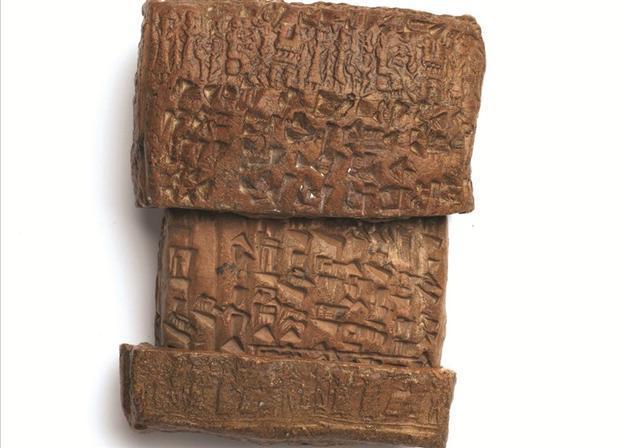Istanbul museum celebrates its anniversary with an exhibit
ISTANBUL

The collection of Turkish and Islamic artifacts gathered by Sadberk Koç forms the original nucleus of the museum collection, which has since been expanded by donations and purchases.
As part of its temporary exhibition program the Vehbi Koç Foundation museum’s Sadberk Hanım Museum is hosting ‘Traces of Ancient Ages,’ which is a part of the Sadberk Hanım Museum Collection. The exhibition opened on Dec. 6 and will be open to visitors until May 25, 2014.
With this exhibition the Sadberk Hanım Museum, which opened on Oct. 14, 1980 as Turkey’s first private museum, celebrates its thirty-third anniversary. The collection of Turkish and Islamic artifacts gathered by Sadberk Koç formed the original nucleus of the museum collection, which has since been greatly expanded by donations and purchases. With the purchase of the Hüseyin Kocabaş collection in 1983 the museum branched out into the field of antiquities.
The Turkish and Islamic collection is housed in Azaryan Yalısı, a historic waterfront house on the Bosphorus strait dating from the late 19th century, while the archaeological collection is exhibited in the adjoining the Sevgi Gönül Building, which was restored and opened in 1988.
Archaeological artifacts in the exhibitionThe exhibition gives a very large insight on the archaeological artifacts in the museum also. Archaeological Section of the Sadberk Hanım Museum is celebrating its 25th anniversary this year. The collection consisting of nearly 7000 objects ranges from the Late Neolithic Age to the Byzantine Period, making it possible to trace the course of successive Anatolian civilizations through their material culture.
Archaeological Section of the museum has steadily grown over the years, with the purchase of rare items from overseas auctions and the acquisition of registered collections. The Sadberk Hanım Museum Archaeological Section will have been open for 25 years in 2013 and it was decided to celebrate this anniversary with an exhibition entitled Traces of Ancient Ages, presenting 150 works that throw light on the periods to which they belong.
These have been selected to best reflect the collection’s comprehensive chronological scope. Exhibits comprise vessels, stone tools and figurines belonging to the Hacılar culture that represent the Late Neolithic and Early Chalcolithic ages in the Lakes Region; idols, spouted jugs and bronze weapons belonging to the Yortan, Troy and Alacahöyük cultures of the Early Bronze Age in western and central Anatolia; cuneiform tablets, seals and libation vessels belonging to the Assyrian Trading Colonies, Hittite and Mycenaean cultures of the Middle and Late Bronze Age; pottery and jewelry belonging to the Urartian, Phrygian and Lydian kingdoms of Iron Age Anatolia; Geometric Period Carian pottery with its wealth of forms and decoration; Attic red and black figure vases decorated with mythological and epic scenes representing cultures of the Archaic and Classical periods; Hellenistic Period gold jewelry, terracotta figurines and mold-made red slip pottery; statuary, glass vessels and jewelry from the Roman Period, and finally mainly metal artifacts representing Byzantine culture, which combined medieval Christian belief with the traditions of Roman art to create its own unique artistic idiom. The exhibition and catalogue have been prepared by museum curators Senem Özden Gerçeker and Deniz Uygun.
